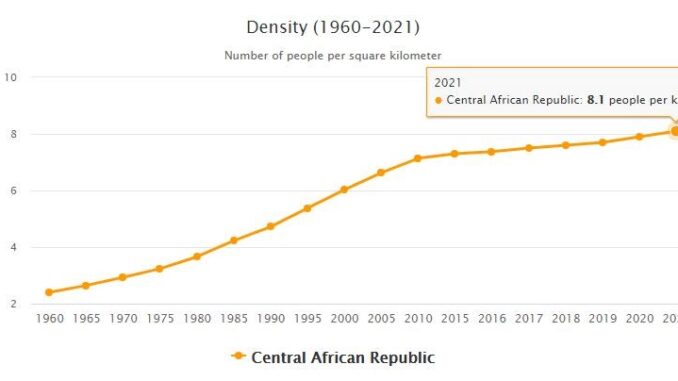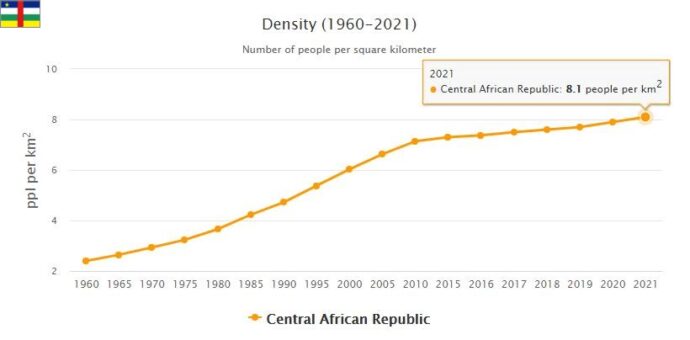
Yearbook 2013
Central African Republic is a country located in Africa as defined on Abbreviationfinder. The year was marked by violence and chaos. By the New Year, the rebel coalition Séléka had come close to the capital Bangui, threatening to take it to end President François Bozizé’s ten-year rule. Since regional forces threatened to stop the rebels, and Bozizé offered them a seat in a unity government, Séléka agreed to participate in peace talks with the government. The Economic Community of Central African States (ECCAS) was a mediator.
On January 11, the parties entered into a cease-fire agreement. According to the agreement, Bozizé would be allowed to end his term until the planned elections in 2016 against his opponents being appointed prime minister and representatives from the political opposition and the rebels to be included in the government. Bozizé also agreed to release all political prisoners and to withdraw foreign troops from the country. However, the UN peacekeeping force BINUCA remained and its mandate was extended to January 2014. The rebels were not forced to retreat but would be included in the army. The next day, Bozizé dismissed the then prime minister to give way to the man of the opposition, who became the opposition lawyer Nicolas Tiangaye. In early February, Bozizé appointed a new government led by Prime Minister Tiangaye. Séléka and the opposition were given several ministerial posts.
Despite the peace settlement, Séléka took up arms again and took the city of Bangassou in mid-March. The rebels accused Bozizé of not respecting the peace settlement and of running a parallel administration alongside the unity government. Later that month, Séléka took control of the capital Bangui and overthrew Bozizé, who fled the country. Rebel leader Michel Djotodia appointed himself new president. He repealed the constitution and dissolved Parliament. The coup was condemned by the outside world. Djotodia appointed a new government on March 31, saying he would govern the country through decrees until free elections were held within three years. Prime Minister Nicolas Tiangaye had to retain his post by a transitional council. In April, Djotodia was elected interim president.
Many Central Africans, especially children, were affected by the fighting and the UN expressed concern about the humanitarian situation in the country. According to the Red Cross, at least 80 people died and over 100 were injured in connection with Séléka’s takeover of power. Thirteen of the dead were South African soldiers and South Africa then withdrew its forces from the Central African Republic. Surviving South African soldiers told the media that after the fighting, they realized that several of the Central African soldiers they killed in the fighting were children.
In mid-April, at least 17 people died when new fighting broke out in Bangui between Séléka and supporters of the deposed President Bozizé. A few days later, the neighboring countries of the Central African Republic agreed to send an additional 2,000 soldiers to the country because it was estimated that the peacekeeping force of 500 men already there was insufficient. ECCAS also decided to accept Djotodia as the country’s leader, but only as interim president pending a new election. At the same time, Bozizé accused Chad of having helped the rebels overthrow him.
The fighting and unrest continued in the capital during April and May. Human rights activists reported that residents lived in fear of robbery and looting of homes and businesses that Séléka rebels were accused of. Many fled to neighboring countries such as Congo-Kinshasa.
In July, the aid organization Doctors Without Borders (MSF) raised an alarm that the health sector has collapsed after the coup in March and that the country was facing a humanitarian disaster. According to MSF, most aid organizations had withdrawn to the capital due to lack of security. Many of them had been robbed and looted. MSF stated that malnutrition was widespread and that the number of malaria infected had increased significantly compared to the previous year.
In August, UN Secretary-General Ban Ki Moon warned that law and order had collapsed and chaos prevailed in the Central African Republic. According to a report to the UN Security Council, Séléka and other unidentified groups had committed several serious abuses, especially in rural areas. These included rape on women and children, torture, killing, arbitrary arrests and recruitment of child soldiers. About 1.6 million people were in urgent need of protection, health care, food and water, according to Ban Ki Moon. He urged the Security Council to impose sanctions or to appoint an expert group to ensure that the guilty are punished. The rescue organization Save the Children warned that another 100,000 children in the country were at risk of being sexually exploited and recruited by armed groups.
- According to AbbreviationFinder.org, Bangui is the capital city of Central African Republic. See acronyms and abbreviations related to this capital and other major cities within this country.
On August 18, Djotodia formally swore the presidency and promised to conduct elections within 19 months. At the end of the month, new fighting broke out in Bangui with several dead as a result. According to UN officials on the scene, Séléka tried to disarm civilians in residential areas near the international airport in the capital, which was said to be Bozizé supporters and which had the arms of the previous government. Over 5,000 people, many of them women and children, fled temporarily to the airport.
In mid-September, after allegations that Séléka rebels created havoc through looting and violent crimes, Djotodia dissolved Séléka and said that those who act in the name of the movement should be punished. Some of the rebels were placed in the national army. The same month, the human rights organization Human Rights Watch released a report stating that Séléka has killed civilians and burnt down homes, schools and churches in over 30 villages between March and June 2013. Violence against the villages continued even after Séléka’s dissolution, as did the fighting between rebels and supporters. to the former president who in some places formed the national guard.
At the end of October, there were about 400,000 internally displaced people in the country, half of them children, UNHCR reported. In addition, close to 70,000 people had moved to neighboring countries. According to the United Nations Office for Humanitarian Aid, OCHA, more than 700 people had been killed since the coup in March. The UN warned that the situation in the country was at risk of genocide because much of the violence appeared to have religious causes. According to reports, the mostly Muslim rebels from Séléka are attacking Christianity, who are the majority in the country.
At the end of October, the UN Security Council decided to send 250 troops to Bangui. They would support the MICSA peacekeeping force, which had 1,100 soldiers in place and which, according to the plans of the African Union, would be expanded to 3,600 men. France would also send more soldiers.
